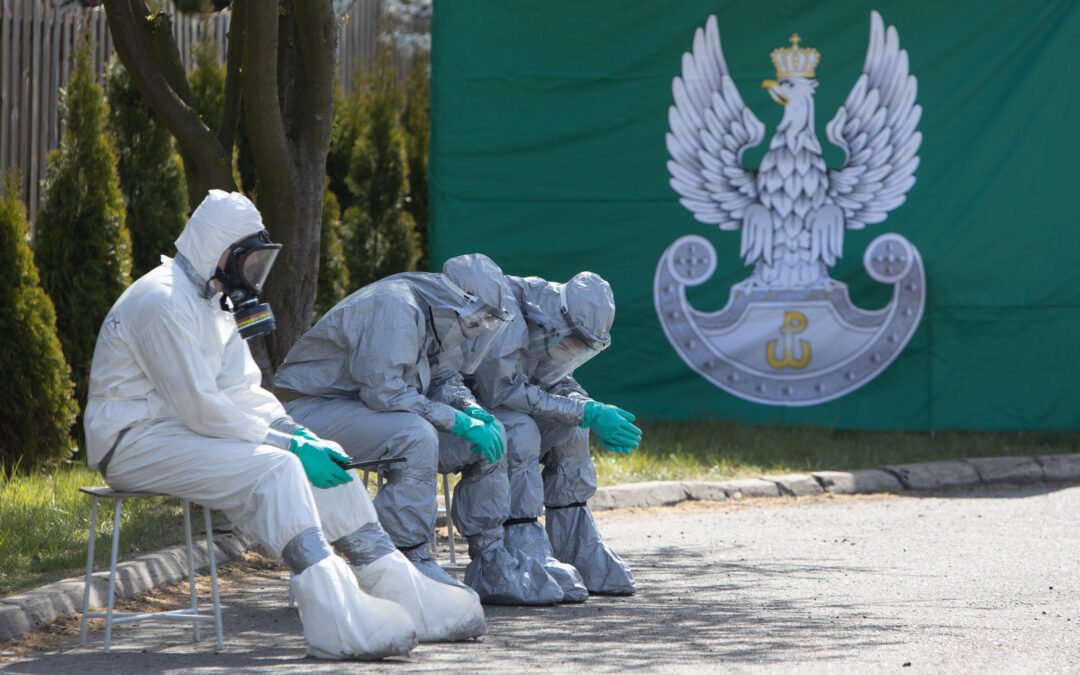“A record number of Poles are dying” amid the epidemic – many more than the health ministry’s COVID-19 data show – an investigation has found. The number of death certificates being issued has since late August been at its highest level in the last decade, and by mid-October was 33% above average.
Poland is currently experiencing record numbers of coronavirus infections. Today it had its highest ever daily figures for both new cases (20,156) and deaths (301), beating the records set yesterday.
The number of COVID-19-related deaths has been rising rapidly since the start of October, when the daily figures were around 30.
However, the number of death certificates being issued indicates that there may be many more victims of the epidemic than those counted in the healthy ministry’s daily figures, and that the death rate began to rise earlier than October.
The findings are reported by Money.pl, a business and finance news website, based on data from Poland’s state registry office made available by the digitisation ministry.
The chart below shows the number of deaths (zgony) from all causes registered every week from 2010 to 2020, as well the average (średnia) each week in the years 2010-19.
In the last week for which data are available, 12-18 October, 10,101 death certificates were issued. That is by far the highest weekly figure recorded at that time of year for the last decade. It is 33% higher than the average in the same week over the previous nine years.
In that week, health ministry data show that 575 people suffered Covid-related deaths. But the death certificate figures show around 2,500 more deaths than average. The unaccounted 2,000 dead contain “the hidden victims of the virus”, writes Money.pl.
The website notes that many of the additional deaths may not be directly the result of COVID-19. But they add that, given Poland’s very low testing rate, a significant number are likely to be, while others could be indirect results of the pandemic, which has placed great strain on the health service.
The data also show that the rise in death numbers began in late August. Before that point, the number of death certificates had been above average for most of the year but mostly within the range seen over the last decade. Since then, it has been continually higher than in any other year.
In response to Money.pl’s report, the health ministry’s spokesman, Wojciech Andrusiewicz, says that they are “following the situation” and have “commissioned an analysis of data on deaths” that will be be made public.
“We are well aware that it is not only COVID-19 that is responsible for deaths, which is why the stable work of health care is so important,” said Andrusiewicz. “However, without substantive analysis, it is difficult to comment on the data itself.”
However, Piotr Szukalski, a sociology professor specialising in demography and part of President Andrzej Duda’s scientific advisory council, told Money.pl that, although “hundreds of factors influence mortality”, the “significant increase” seen in the death certificate data does indicate that the pandemic is responsible.
Szukalski believes that the rise in deaths may be driven above all by the indirect consequences of the pandemic: medical visits being delayed because of the burden on the healthcare system or patients being worried about infection, as well as the physical and psychological effects of people being confined to their homes.
Since late September, there have been reports of hospitals in Poland struggling to cope with the rise in coronavirus cases. These problems have intensified over October, leading the government to begin creating emergency temporary hospitals.
However, many hospital directors and doctors have warned that the main problem is not a lack of space or equipment, but rather of medical personnel.
The opposition mayor of Warsaw, Rafał Trzaskowski, has alleged that the government’s new emergency hospital in the National Stadium has been trying to poach medics from the city’s other facilities with offers of higher pay, thereby disrupting the overall functioning of the healthcare system.
The system is “on the brink of collapse”, Trzaskowski told Wirtualna Polska yesterday. He accused the government of “not preparing a strategy for the second wave”.
During the first wave of the pandemic, when Poland’s early and tough lockdown helped keep infections low, one analysis found that the number of deaths was actually lower than in the recent past. Another report suggested that cleaner air created by the lockdown had saved more lives in Poland than the COVID-19 death toll at that point.
More detailed research by scholars at Imperial College London, published earlier this month, found that, from February to May, Poland had an excess death rate of 4.25 per 100,000 men. Among women, there were actually 2.19 fewer deaths per 100,000 people than would have normally been expected.
Poland had a relatively low rate of excess deaths among men during the first wave of the coronavirus pandemic, and among women there was no rise in deaths at all.
The findings come from a study by researchers at Imperial College London: https://t.co/32a2ljpwJE pic.twitter.com/x4FeTuO6uH
— Notes from Poland 🇵🇱 (@notesfrompoland) October 14, 2020
Main image credit: Lukasz Cynalewski / Agencja Gazeta

Daniel Tilles is editor-in-chief of Notes from Poland. He has written on Polish affairs for a wide range of publications, including Foreign Policy, POLITICO Europe, EUobserver and Dziennik Gazeta Prawna.




















